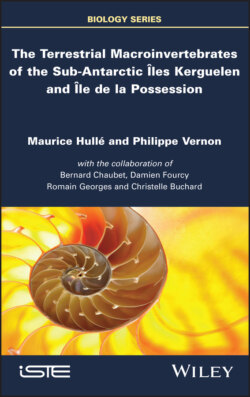Читать книгу The Terrestrial Macroinvertebrates of the Sub-Antarctic Iles Kerguelen and Ile de la Possession - Maurice Hulle - Страница 18
1.2.1. Sea-edge
ОглавлениеThe seaside habitats (Figure 1.8) may consist of bare rocky areas such as pebble beach, blocks or shore platforms. They can be also covered with Crassula moschata or with coastal meadows, where native plants such as Leptinella plumosa, Pringlea antiscorbutica or Poa cookii dominate. Introduced plants such as Taraxacum officinale and Poa annua can also be locally abundant. These habitats are under the direct influence of marine inputs that are stranded algae. This oceanic input constitutes a very important food resource for terrestrial fauna. It is also the area occupied by colonies of seabirds and marine mammals whose feces, carrions and broken eggs are a major source of food for invertebrates.
The small coastal cliffs that are covered with vegetation harbor a significant diversity of invertebrate species. These are probably the richest environment for macroinvertebrates (Figure 1.9).
Figure 1.8. Sea-edge habitats (photos: M. Hullé)
Figure 1.9. This littoral cliff at Pointe Suzanne (Îles Kerguelen), covered with Pringlea antiscorbutica, Leptinella plumosa, Poa cookii and Poa annua, was home to 18 different invertebrate species such as the spiders Myro kerguelenensis, Neomaso antarcticus, the moth Embryonopsis halticella, the beetles Meropathus chuni, Bothrometopus brevis, Ectemnorhinus viridis, Merizodus soledadinus, Cartodere nodifer, the flies Amalopteryx maritima, Apetaenus litoralis, Anatalanta aptera, Calycopteryx moseleyi, Fucellia tergina, Psychoda parthenogenetica, and the aphids Rhopalosiphum padi and Myzus ascalonicus (photo: M. Hullé)
The seaside is the exclusive habitat of some species such as the weevil Palirhoeus eatoni and the flightless flies Apetaneus enderleini and Paractora dreuxi.
